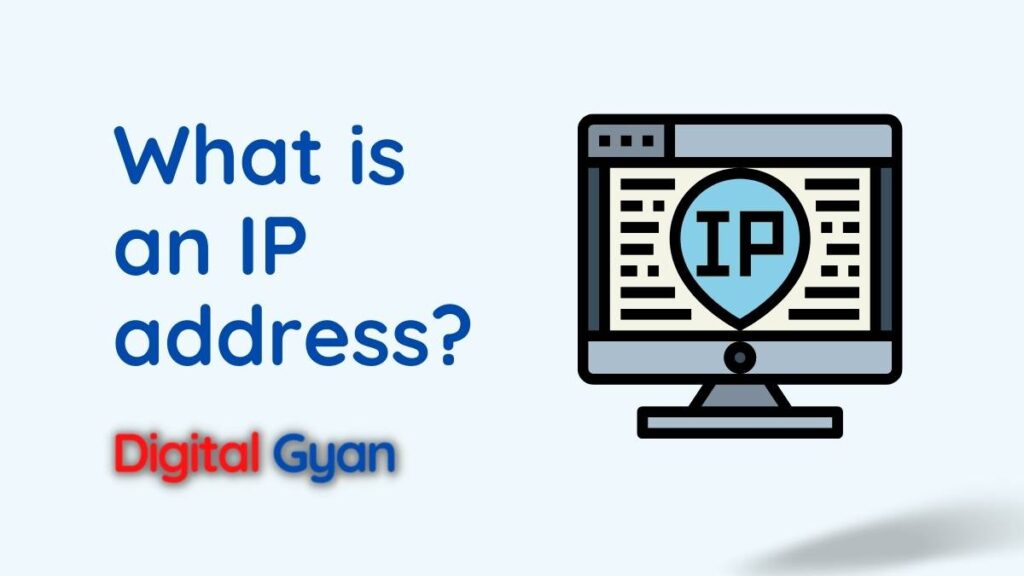What is an IP Address, and How Does it Work?
With the growing need for internet privacy, most of us have heard about the concept of “IP address.” What exactly is an IP address, how does it work, and what can it tell us about the person using it?
In this post, we’ll take a closer look at the IP address, types of IP addresses and how these can be useful in investigating internet users.
What is an IP Address?
An IP address is simply a numeric code that indicates a particular internet connection to the outside world. It is actually a portion of the data that travels over your network connection, a number of data bytes that make up the communication string between two computers (typically a client and a server).
You may think your computer already has an IP address, which it does, but your IP address is usually obtained through your ISP.
As with conventional addresses, they assist packets or communication in determining where they are supposed to go and where they are supposed to place requests and receive responses. Thus, when we discuss IP addresses, we typically refer to three things: the IP addresses themselves, something called the subnet mask, and finally, a gateway.
Thus, if you’ve ever attempted to configure or enter an IP address into one of your devices, such as your laptops, you’ll have encountered these three items. Thus, what do they imply? Thus, IP addresses, as we all know, are unique addresses assigned to your system over the network.
When it comes to the subnet mask, this basic address or these digits define whether this IP address and the others are part of the same network. Thus, a computer can determine whether 192 168 dot 0 dot 2 or any other IP address with this subnet mask is part of the same network as 192 168 dot 0 dot 2. How? We’ll take a look at it later. And gateway is the router’s IP address.
What is IPv4?
The IPv4 (Internet Protocol Version 4) Address is the address of a computer on the Internet. This address is the same for all computers on the Internet. This address is used by the client to send an IP message to the server. The IP message informs the server that the server should handle a given task. The message contains two things:
- The IP address of the client (the sender)
- The IP address of the server (the destination)

What is IPv6?
IPv6 is the most recent version of the Internet Protocol (IP), the communications protocol that provides an identification and location system for computers on networks and routes traffic across the Internet. IPv6 was developed by the Internet Engineering Task Force (IETF) to deal with the long-anticipated problem of IPv4 address exhaustion.
IPv6 was developed in the 1990s in response to the impending exhaustion of the IPv4 address space.
IPv6 addresses are 128-bits long, which provides approximately 3.4×10^38 unique addresses. This is a vast improvement over the 4.3 billion unique addresses provided by IPv4.
IPv6 addresses are four times larger than IPv4 addresses, meaning that there are many more of them. This larger address space is the most significant difference between the two versions of the IP protocol.
IPv6 also includes several other changes and improvements, including support for new types of network applications and devices, more straightforward network configuration, increased security, and more efficient routing.
Public vs Private IP Addresses
A public IP address is assigned to a device by the internet service provider (ISP) and is globally unique. It allows devices to communicate over the internet and be accessed from anywhere in the world. Websites, web servers, and other publicly accessible services use public IP addresses to connect with users across the internet.
On the other hand, a private IP address is assigned to devices within a private network, such as a home or office network. Private IP addresses are not directly accessible from the internet. Instead, they are used for internal communication within the local network, allowing devices to connect and share resources like printers, file servers, or other devices.
The main difference between public and private IP addresses lies in their reachability. Public IP addresses can be reached from anywhere on the internet, while private IP addresses are limited to local network communication. This segregation helps protect devices within a private network from unauthorized access and enhances security.
Additionally, public IP addresses are typically static, meaning they remain constant over time. This consistency is crucial for services that need a fixed reference point on the internet. In contrast, private IP addresses are often assigned dynamically by a router within a network, ensuring efficient allocation and optimal resource utilization.
Dynamic vs Static IP Addresses
A dynamic IP address is assigned to a device by a DHCP (Dynamic Host Configuration Protocol) server. It is temporary and subject to change. Each time a device connects to the network, it may receive a different IP address. Dynamic IP addresses are commonly used in home networks and small businesses, as they are more cost-effective and allow efficient use of available IP addresses.
On the other hand, a static IP address is manually assigned to a device and remains constant over time. It does not change even if the device disconnects and reconnects to the network. Static IP addresses are often used by servers, network devices, and services that require a fixed, consistent reference point on the internet. They provide stability and reliability for these services.
The main difference between dynamic and static IP addresses lies in their persistence. Dynamic IP addresses are temporary and subject to change, while static IP addresses remain constant. Dynamic IP addresses are more suitable for devices that do not require a fixed address and can adapt to changing circumstances. Static IP addresses, on the other hand, provide a reliable, fixed reference for devices or services that require consistent accessibility.
It is important for network administrators to understand the distinction between dynamic and static IP addresses as it helps in configuring appropriate network settings and security measures. For example, a server or a device that hosts a website or other online services may require a static IP address to ensure uninterrupted availability, while other devices within the network can efficiently utilize dynamic IP addresses.

